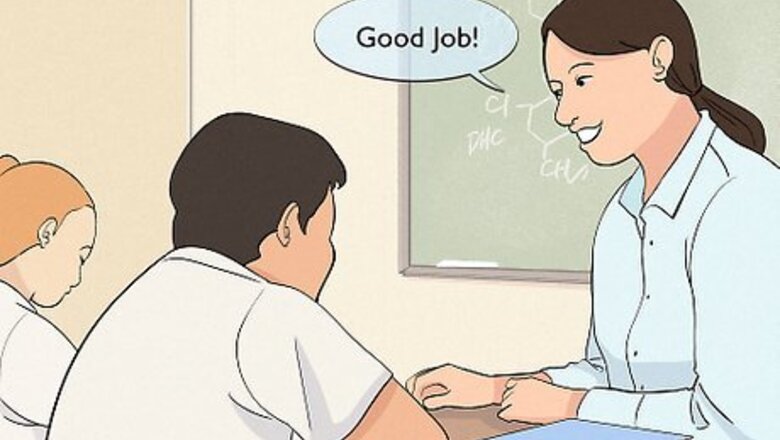
views
Offering Support and Positivity
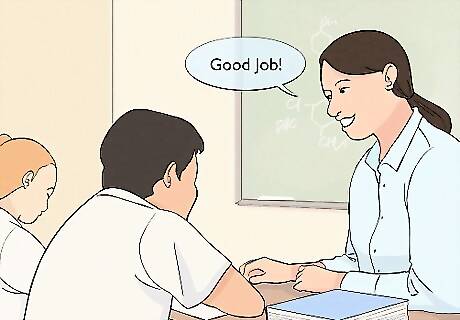
Look for opportunities to praise positive actions. You surely want to correct disruptive behavior; however, when a student does something the right way, give attention to these moments. Encouraging positive behavior shows other students a positive example and lessens the attention given to misbehaving. Redistributing praise will give every student the opportunity to do something well. Thank a student for raising their hand to speak. Give praise to the entire class, like “Thanks everyone for turning in your assignment on time!”
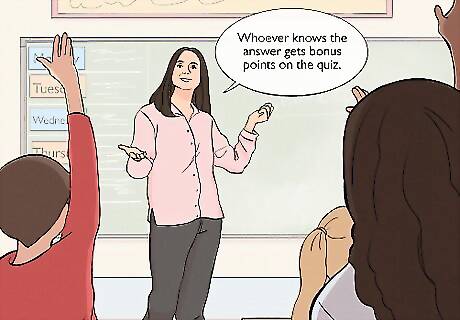
Offer rewards to increase motivation and attention. Try classroom reward systems like offering bonus points or using a prize bucket to encourage students to better their achievements and actions. A student who is usually disruptive will start to interrupt less if they are motivated by doing well with their assignments or following the rules.

Offer support and encouragement to boost your students’ self-esteem. Believing in your students and showing you care helps redirect misbehavior into positive actions. It will also help boost their self-esteem, and they will start believing in their own abilities more. If a student is not understanding something, offer to show them after class. If a student keeps interrupting class discussion, ask them personally if there is something they would like to talk about one-on-one at a later time. If a student is really passionate about one subject, offer them additional reading materials on the topic. EXPERT TIP Joseph Meyer Joseph Meyer Math Teacher Joseph Meyer is a High School Math Teacher based in Pittsburgh, Pennsylvania. He is an educator at City Charter High School, where he has been teaching for over 7 years. Joseph is also the founder of Sandbox Math, an online learning community dedicated to helping students succeed in Algebra. His site is set apart by its focus on fostering genuine comprehension through step-by-step understanding (instead of just getting the correct final answer), enabling learners to identify and overcome misunderstandings and confidently take on any test they face. He received his MA in Physics from Case Western Reserve University and his BA in Physics from Baldwin Wallace University. Joseph Meyer Joseph Meyer Math Teacher Take satisfaction in seeing your students thrive. Celebrate your students' "aha!" moments and enjoy witnessing their progress. Appreciate when they buy into the collaborative learning environment you've been fostering. These rewarding moments are the fuel that will uphold your passion for teaching.
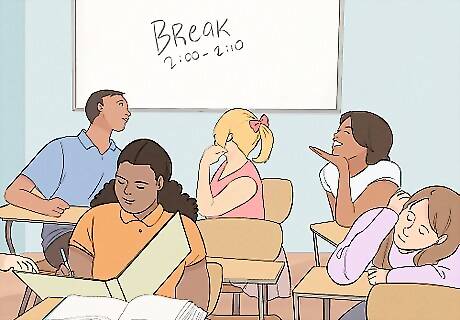
Give students breaks so that they can learn in manageable chunks of time. Students can act disruptive when their attention is fading or if they are not engaged. Giving short breaks throughout your lesson will help break up the work and keep students attentive. Breaks can be simple, like stopping to do ten jumping jacks or taking a walk through the hallway. Break frequency and length is personal preference. Aim to take breaks after long sections on one topic or when your students look like their attention is fading. Don't take breaks longer than just a few minutes so they don't interfere with your teaching time. You can also find a relevant, short, and fun video on the internet to play as an intermission. Giving breaks will also offer encouragement and a reward. You can say something like, “Okay class, after we finish the first draft of the essay, we will take a five minute reading break.” Regular breaks will keep students from burning out and help them be more productive.
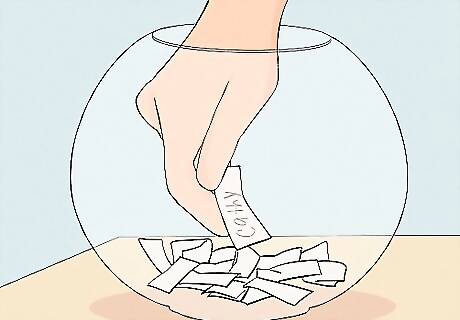
Avoid hurting students' feelings when calling on select students. Most classes will always have a few students who always raise their hands first. However, you want to call on all students as equally as you can. Try the "pick a stick" behavioral strategy to help ensure all students are called on and feelings aren't hurt. Write the students' names on a Popsicle craft stick. Pick the stick in order to select the student to call on. You can also assign each student a number and write the number down. Pick a stick and select the student who was assigned the same number as what is written on the stick. Use this when assigning student jobs or choosing helpers as well.
Setting Clear Guidelines and Expectations

Set rules early in the year so students know what is expected of them. Think about at least three rules before the school year starts. Give students the opportunity to add in two more rules. If the students have a voice in establishing expectations, they are more likely to follow the rules. Grouping things in threes or fives can make it easier to remember.
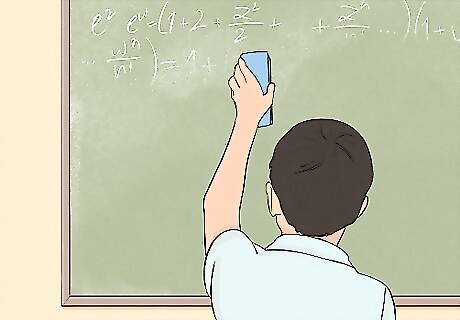
Help your students be more responsible. Gradually increase your students' responsibilities by assigning small tasks, such as erasing the board or collecting homework. This will help them feel a greater sense of accountability. Identify your most irresponsible students and give them small tasks that will boost their accountability. Small tasks will build responsibility, and responsibility will lead to better behavior.
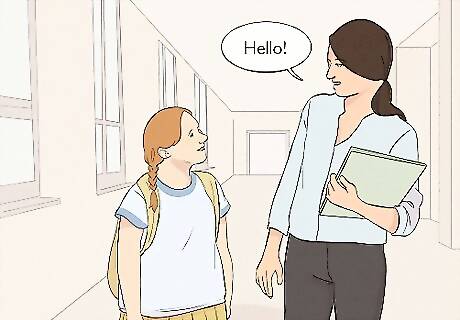
Set an example for you students by teaching politeness. Model the behavior you want your students to mimic by saying polite things and acting kind. Focus on encouraging “please and thank you,” “hello and goodbye,” and “excuse me.” Reinforcing proper manners will inspire more acts of politeness and change the tone of your classroom.
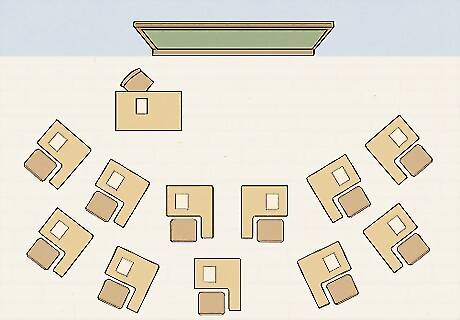
Arrange your classroom in a spiral shape. This will create a positive learning environment. Place your teaching spot at the front of the room and arrange the students’ desks in a circle around this spot. You will be able to see all students, easily move around your classroom, and minimize distractions. Each student will easily see the front of the room. Once they are familiar with this circular seating arrangement, your students will establish their own personal space in your classroom. Knowing their spot can help improve overall behavior because they get comfortable with this viewpoint.
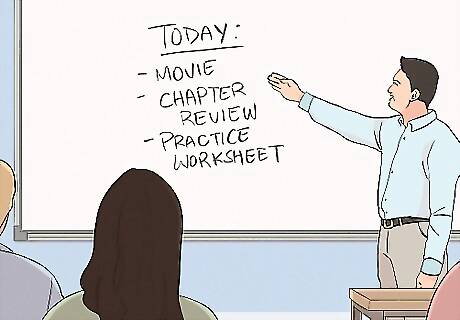
Show students the daily agenda so they know what to expect. Surprises can throw off a student, make them anxious, and cause them to misbehave. A simple solution is to write a daily agenda on your board, detailing what you will cover that day. If your students feel prepared for the day, they will feel less anxiety and behave better. You can write things like, “watch movie,” “finish practice problems,” or “take test.”

Provide hands-on assignments to engage students in their work. Hands-on assignments include activities like building models, doing science experiments, or acting out scenarios. This will minimize students’ potential to get bored and cause disruptions. Incorporating an active learning style will keep all students engaged and can also be a fun way to learn. For math classes, play a game such as Jeopardy, and have students answer math problems correctly for points. The students or team with the most correct answers win. For English classes, try using "popcorn" reading, where one student reads a paragraph, and then calls on another student in the class to read the next paragraph. This keeps students listening and aware.
Dealing with Difficult Students
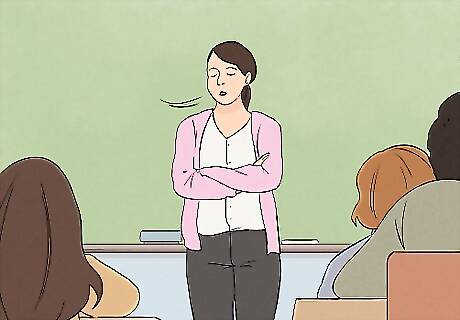
Take a breath and speak kindly when addressing challenging students. If you act frustrated or angry, this will rub off on your students and they will likely respond similarly. Take a second to compose yourself if you need it, but make sure you speak kindly to set the tone. Making students feel good about themselves and their behavior is your goal.

Let a misbehaving student respond and encourage a solution. Giving your student the opportunity to speak will make them feel validated and understood. Let them explain why what they did was wrong, and encourage them to come up with a solution. This may go something like this:"John, that wasn't a very nice response. Why is that a mean thing to say?"

Assure the student that you like them, just not their behavior. Reassure them by saying something like, "Hey Kayla, I like you, I just don't like when you call out an answer before I call on you". This will affirm to them that there isn't anything wrong with them, just the action, and this will make them less likely to do it next time.

Speak in private for specific or chronic behavior disruptions. Sometimes you have to speak more in depth about an issue with a student. When this happens, have the conversation in private. In your office or after class can be good times for this. Describe the misbehavior specifically and outline the consequences of the action. If necessary, this is a time to carry though with disciplinary actions, like detention or suspension.



















Comments
0 comment